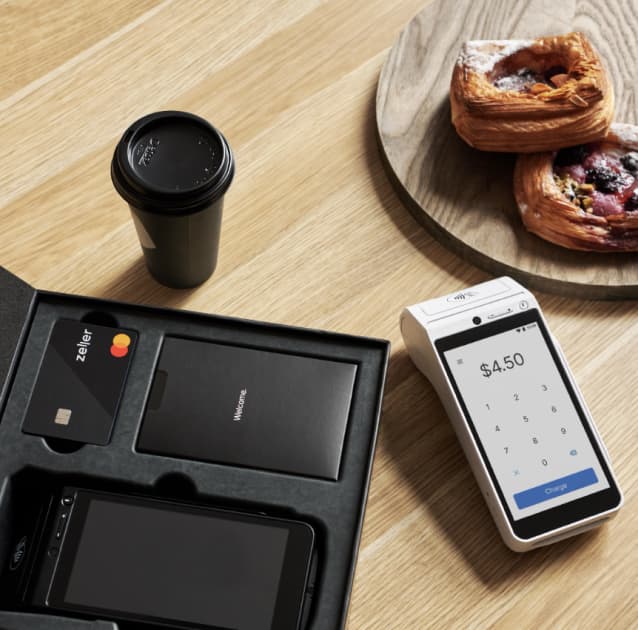
- EFTPOS & Point of Sale Solutions
Understanding Merchant Fees in Australia
For Australian merchants, card fees are a necessary cost of doing business.
Every time a customer pays with a card or digital wallet, the merchant pays a fee to process that transaction. These fees might seem small per transaction, but they can add up if you’re not monitoring your costs, and ensuring you’re optimising your business payments for affordability. Many business owners find merchant fees confusing or buried in complex statements, so understanding how merchant fees work is crucial for protecting your profits.
In this guide, we’ll break down what merchant fees are, how electronic payments are processed, the different types of fees and pricing models, and why fees vary. By demystifying merchant fees, you can take control of your payment costs and keep more of each sale in your business.
What are merchant fees?
Merchant fees are the costs businesses pay to accept and process electronic payments. In simple terms, whenever a customer taps, dips or swipes their credit or debit card (or uses a mobile wallet), a small fee is charged for securely and efficiently moving the money from the customer’s account to the merchant’s account. This fee, often called a merchant service fee, covers the technology and infrastructure that make instant, secure card payments possible.
Compare merchant fees in Australia.
How electronic payments are authorised.
When a customer makes a card payment, there are several players working behind the scenes to authorise the transaction.

Each participant in this chain may charge a small fee for their role, and together these make up what the merchant ultimately pays as fees for the transaction. For online payments, a payment gateway serves a similar role to the terminal, securely sending transaction data to the acquirer.
Types of merchant fees.
Not all merchant fees are created equal. Here are the most common categories:
Transaction fees
These are the fees charged on each card transaction, usually calculated as a percentage of the sale and sometimes with an additional fixed amount. This includes the interchange fee (paid to the cardholder’s bank), scheme or network fees (charged by Visa, Mastercard, American Express or EFTPOS), and any fees charged by your payment provider to cover their operating costs.
Terminal and equipment fees
If you use an EFTPOS terminal, you may be charged a rental or purchase fee. Some providers lease terminals on a monthly basis, while others let you buy the hardware outright. Zeller charges no ongoing rental fees, your terminal is yours to keep, and you can purchase one for as little as $99.
Account and service fees
These might include monthly account fees, statement fees, payment gateway fees, or inactivity charges. Zeller does not charge any of these fees whatsoever.
Situational fees
These include chargeback fees, refund fees, international transaction fees, early termination fees, and more. Zeller does not charge any of these fees whatsoever.
Understanding merchant fee pricing models.
The way your fees are structured matters. Here are the three main pricing models used in Australia:
Flat-rate pricing
One fixed rate for all transactions, which is simple and predictable. For example, Zeller charges a flat 1.4% on all tapped, dipped or swiped card payments, no matter the card type – even American Express.
Interchange-plus pricing
This breaks down the wholesale cost (interchange and scheme fees) and adds a fixed provider charge on top. It offers transparency, but your fees may vary month to month depending on your transaction mix.
Tiered pricing
Transactions are grouped into “tiers” with different rates, depending on the perceived cost or risk. It’s the least transparent model and often leads to bill shock. Many businesses avoid it for that reason.

Why do merchant fees vary?
Card transaction fees can change depending on several factors, like:
Card type
Debit cards usually have lower fees than credit cards. Rewards cards (particularly premium ones) typically cost merchants more due to higher interchange fees – but not with Zeller. We charge the same flat rate across all major card types, including American Express.
Transaction method
Card-present transactions (tapped or inserted cards accepted in-person) cost less than card-not-present transactions (online or keyed-in), due to decreased risk of cardholder fraud.
Card country of origin
International card payments usually incur higher fees due to currency conversion, cross-border processing, and enhanced fraud protection. Unlike many providers, however, Zeller maintains consistent merchant fees for both domestic and international transactions.
How to reduce your merchant fees.
Here are five key ways to get your merchant fees under control:
Review your statements: Understand exactly how much you’re being charged, and for what. Check if you’re paying hidden fees you weren’t aware of.
Ask your provider questions: Request a detailed fee breakdown. Ask if better rates are available, or if you can switch to a more cost-effective plan.
Compare providers: If your fees seem too high, shop around. Look for transparent pricing with no lock-in contracts or hidden charges. The Zeller Sales team can help you compare offerings from providers – get in touch here.
Consider surcharging: Surcharging is allowed in Australia, but only to the extent of your actual cost of acceptance. Be transparent and stay within RBA and ACCC guidelines.
Reduce fraud and chargebacks: Implement good fraud controls. Fewer chargebacks mean fewer surprise costs.
Even small changes, like switching to a provider with better pricing or reviewing how your customers pay, can significantly reduce your merchant fees over time.

What to ask when choosing a payment provider.
Before signing with a payment provider (or when reviewing the merchant fees offered by your current provider), ask:
– What pricing model do you use?
– Are there any setup, rental, monthly or cancellation fees?
– Do rates vary by card type or transaction method?
– Can I purchase my terminal instead of renting it?
– Are your statements transparent?
– What POS and accounting integrations do you offer?
– What fraud protection tools are included?
– What customer support is available if something goes wrong?
A good provider should be able to answer these questions clearly and confidently. If they can’t, that’s a red flag.

Already got a POS?
Zeller integrates with 600+ third-party point-of-sale systems, so we probably integrate with yours.
Zeller – a lot more than just lower fees.
A flat, transparent 1.4% rate on every card payment is great, but Zeller gives you even more ways to optimise your business finances.
With Zeller, payments are settled nightly into your Zeller Business Transaction Account 7 days a week, giving you fast access to your money. And with a Zeller Savings Account, you can earn interest at a rate significantly higher than what the big-4 banks offer. Plus, tools like Zeller Invoices streamline your billing process, while the Zeller Debit Card lets you spend directly from your business funds. Smart, integrated, cost-efficient and powerful – purpose-built for modern business.



